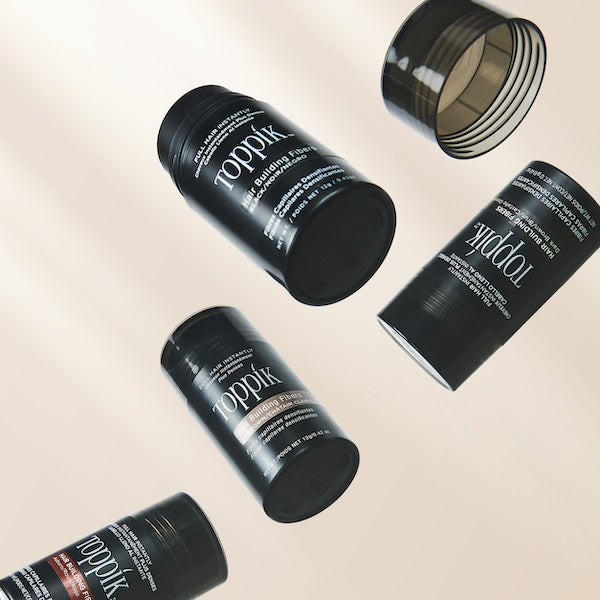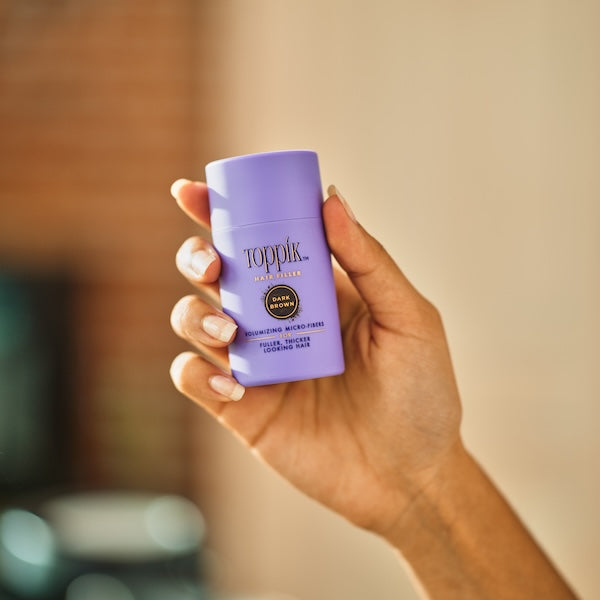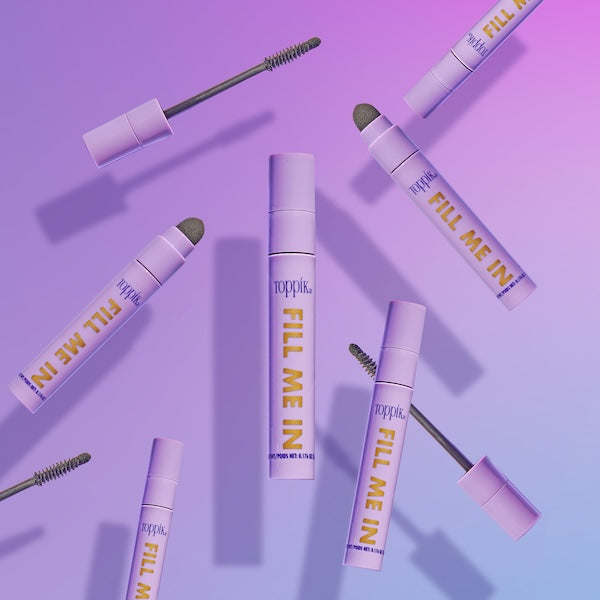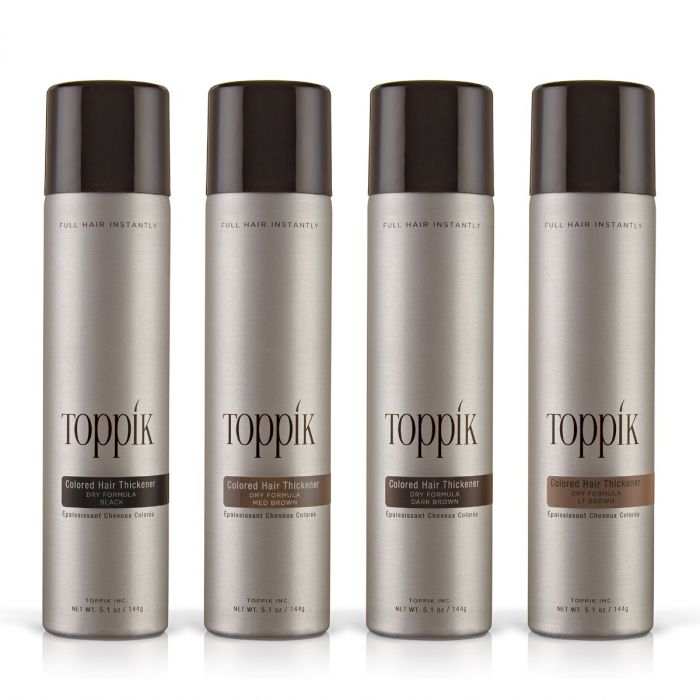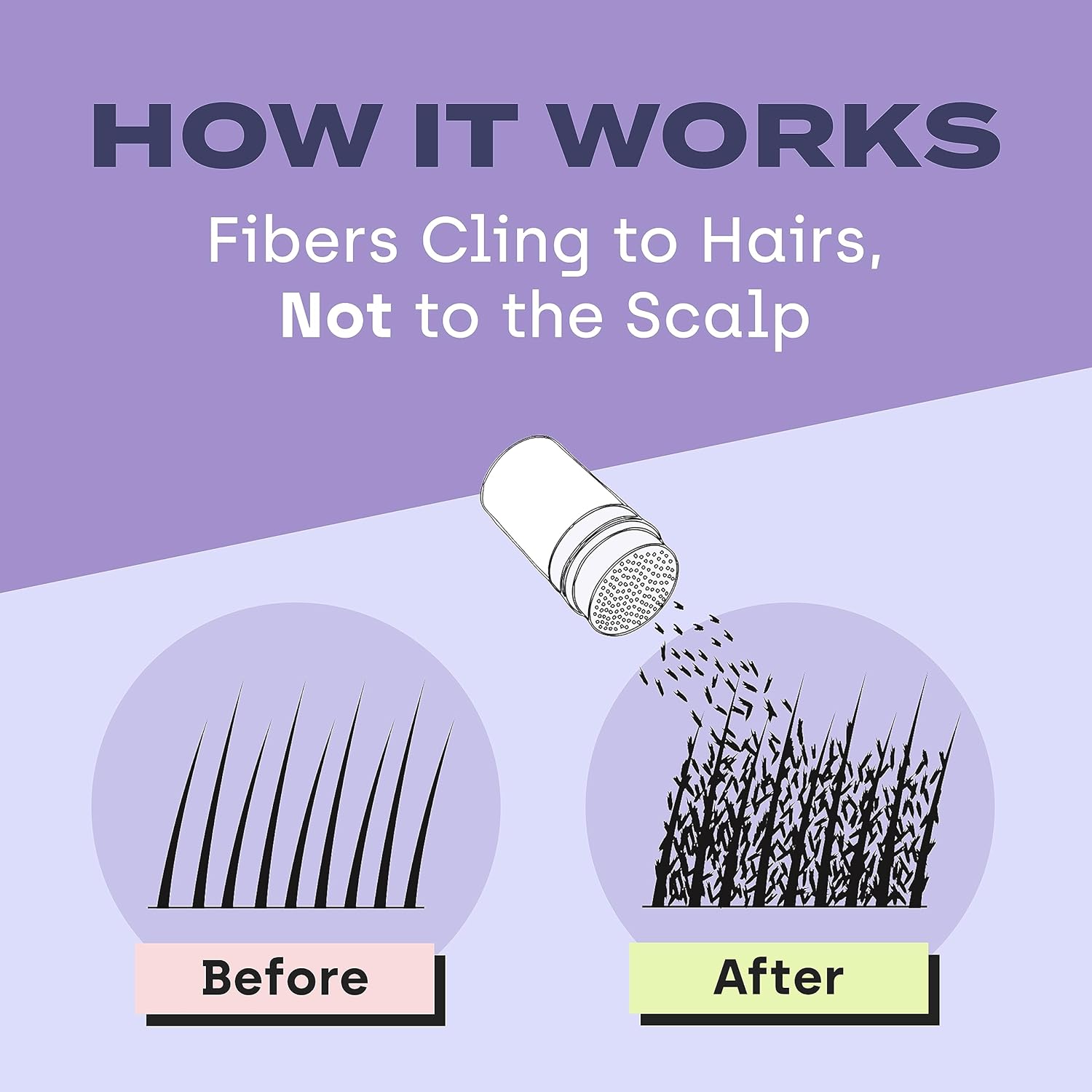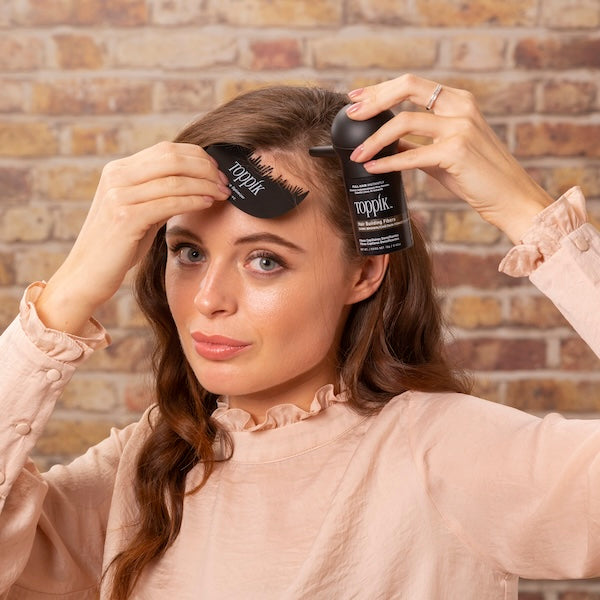Life after 40 brings its own unique challenges. There are career pressures, family responsibilities, and health considerations (just to name a few). While these stressors are part of modern life, many men don’t realize that chronic stress can have a profound impact on their hair health. Stress hair loss is a common issue that affects individuals experiencing high levels of emotional or physical stress. The good news? Most stress-induced hair shedding is temporary and treatable with the right approach.
Recognizing the first signs of hair loss from stress and taking proactive steps can help you maintain a fuller, healthier-looking head of hair. This comprehensive guide will walk you through everything you need to know about hair loss caused by stress, from understanding the underlying causes to implementing effective prevention and treatment strategies.
Understanding Stress-Induced Hair Loss
Stress can cause hair loss by disrupting the natural hair growth cycle, leading to conditions like telogen effluvium, alopecia areata, and trichotillomania. This disruption occurs when stress hormones, particularly cortisol, interfere with the normal progression of hair follicles through their growth phases.
Hair growth occurs in three distinct phases: anagen (growth), catagen (transition), and telogen (resting). Under normal conditions, about 85-90% of your hair is in the active growth phase at any given time. However, when you experience significant stress, this balance can shift.

What causes stress-related hair loss?
Stress impacts hair growth through disrupting the hair growth cycle, autoimmune conditions, or compulsive hair pulling. This process can manifest in several ways:
-
Telogen effluvium is the most common form of stress-induced hair shedding. When you experience physical or emotional trauma, a large number of hair follicles are pushed prematurely into the telogen (resting) phase. Eventually, this hair falls out. This results in diffuse thinning across the scalp, typically becoming noticeable 2-3 months after the stressful event.
-
Alopecia areata is a condition where stress can trigger the immune system to attack hair follicles, resulting in patchy hair loss.
-
Trichotillomania involves compulsive hair pulling caused by emotional stress. This behavior-related hair loss often develops as a coping mechanism for anxiety, depression, or other psychological stressors.
Does stress cause hair loss?
Yes, stress can cause hair loss by disrupting the hair growth cycle and triggering conditions like telogen effluvium. Both acute and chronic stress can lead to changes in hair growth because the stress hormone cortisol interferes with normal functioning of hair follicles, disrupting protein synthesis and reducing the production of essential growth factors.
During times of stress, your body prioritizes essential functions over non-essential ones like hair growth. This biological response makes sense from an evolutionary perspective (when facing immediate threats, growing hair was less important than survival). However, in our modern world, chronic stress can keep this response activated for extended periods, leading to prolonged hair loss issues.
For men dealing with stress-related thinning, Toppik Hair Building Fibers offer an immediate solution to create the illusion of full-looking hair while addressing the underlying stress factors. These colored keratin protein fibers blend seamlessly with existing hair strands, instantly creating the appearance of naturally thick, fuller hair that can boost confidence.
Symptoms of Stress-Related Hair Loss
Symptoms of stress-related hair loss include excessive shedding, bald patches, thinning hair, and compulsive hair pulling. Recognizing these signs early can help you take appropriate action before the condition worsens.
Excessive Hair Shedding
Excessive hair shedding, also known as stress-induced hair shedding, occurs when noticeable clumps of hair fall out during brushing or washing. Normal hair shedding involves losing 50-100 strands per day, but stress-related shedding can result in losing even more. You might notice more hair in your shower drain, on your pillow, or when combing your hair.
This type of shedding typically begins 2-3 months after a stressful event, which can make it challenging to connect the hair loss to its underlying issue. The delayed onset occurs because hair follicles need time to progress through their growth and shedding cycle before the effects of stress become visible.

Bald Patches and Thinning Areas
Bald patches and thinning areas are additional symptoms that indicate stress-related hair loss. Alopecia areata often presents as circular or oval patches of complete hair loss, typically on the scalp but sometimes affecting the eyebrows, beard, or other body hair. These patches can vary in size from coin-sized spots to larger areas.
Thinning hair, particularly noticeable along the hairline, crown, or part is one of the most visible signs of stress-related hair loss. Unlike male pattern baldness, which typically follows predictable patterns, stress-related thinning can occur anywhere on the scalp and often appears more diffuse.
How do I know if hair loss is from stress?
Several factors can help you determine if your hair loss is stress-related:
-
Timing: Hair loss that begins 2-3 months after a significant stressful event
-
Pattern: Diffuse thinning rather than typical male pattern hair loss (more on that below)
-
Reversibility: Hair loss that stabilizes or improves when stress levels decrease
-
Associated symptoms: Other signs of stress like sleeplessness, anxiety, or mood changes
Before and after using Toppik Hair Building Fibers.
Will hair loss due to stress grow back?
Hair loss from stress is typically temporary and reversible once the underlying stressor is addressed. However, the timeline for recovery can vary significantly depending on the severity of the stress, overall health, and how quickly you implement treatment strategies.
For immediate confidence while waiting for natural regrowth, Toppik products offer an excellent solution. Toppik Colored Hair Thickener can instantly fill in thinning areas, making fine hair look thicker and fuller and hiding scalp show-through.
Male Pattern Baldness vs. Stress-Related Hair Loss
While both male pattern baldness (androgenic alopecia) and stress hair loss can affect men over 40, they have different causes, patterns, and prognoses.
Male Pattern Baldness
Male pattern hair loss is primarily genetic and hormone-driven, caused by sensitivity to dihydrotestosterone (DHT). It follows predictable patterns, typically starting with a receding hairline, crown thinning, or both. This type of hair loss is permanent and progressive, with hair loss beginning in your 20s or 30s and worsening over time. The hair follicles gradually shrink and eventually stop producing hair.
Stress Hair Loss
Stress hair loss presents differently. It typically causes diffuse thinning across the entire scalp rather than following specific patterns. Hair loss from stress usually begins 2-3 months after a significant stressful event. Unlike male pattern baldness, stress hair loss is usually temporary and reversible, with hair regrowth occurring naturally as stress levels decrease.
Prevention and Treatment Strategies
Prevent and treat stress-related hair loss by managing stress, maintaining a healthy diet, using gentle hair care products, and consulting a dermatologist if needed. A comprehensive approach that addresses both the root cause and the symptoms typically yields the best results.
Stress Management Techniques
Practice mindfulness, meditation, or yoga to reduce stress levels and prevent hair loss caused by stress. Regular stress management is crucial for both preventing hair loss and promoting regrowth. Consider these techniques:
-
Exercise regularly – Physical activity reduces cortisol levels and promotes the release of endorphins, which naturally combat stress. Aim for at least 30 minutes of moderate exercise most days of the week.
-
Prioritize sleep – Poor sleep quality can exacerbate stress and interfere with hair growth. Establish a consistent sleep schedule and create a relaxing bedtime routine.
-
Practice relaxation techniques – Deep breathing exercises, progressive muscle relaxation, and mindfulness meditation can help activate your body’s relaxation response.
How to stop hair loss from stress?
Focus on stress management techniques like exercise, relaxation, and professional therapy. The key to stopping stress-related hair thinning lies in addressing the underlying stressors while supporting your body’s natural healing process. Consider working with a mental health professional if you’re dealing with chronic stress, anxiety, or depression.
Nutritional Support
Include protein, biotin, zinc, and iron-rich foods in your diet to support hair health. Here’s how each of these nutrients helps with hair growth:
-
Protein – Hair is primarily composed of protein, making adequate intake essential for growth and strength
-
Iron – Deficiency can worsen hair loss
-
Biotin and B vitamins – Support hair follicle function and protein synthesis
-
Zinc – Plays a crucial role in hair tissue growth and repair
-
Omega-3 fatty acids – Reduce inflammation and support overall health
Gentle Hair Care Practices
Avoid harsh chemicals, heat styling, and tight hairstyles to avoid further damaging hair. When dealing with hair loss from stress, your hair may become more fragile and susceptible to damage.
Implement these gentle hair care practices:
-
Use sulfate-free shampoos and moisturizing conditioners to cleanse hair without stripping it
-
Limit heat styling and use heat protectant products when necessary to prevent heat damage
-
Avoid tight hairstyles that pull on hair follicles
-
Be gentle when brushing wet hair, using a wide-tooth comb instead of a brush to prevent breakage
-
Pat hair dry with a towel rather than rubbing vigorously
Professional Treatment Options
You may want to consult a dermatologist for persistent hair loss or underlying medical conditions. Professional evaluation may be necessary.
Treatment options could include:
-
Minoxidil – FDA-approved topical treatment that can help stimulate hair growth
-
Low-level laser therapy – Non-invasive treatment that may promote hair growth
-
Corticosteroid injections – For alopecia areata patches
-
Platelet-rich plasma (PRP) therapy – Emerging treatment that uses your own blood platelets to stimulate hair growth

How long does it take for hair to grow back after stress?
Hair typically regrows within 3-6 months after the stressor is resolved, but individual factors may vary. The timeline depends on several factors, including the severity of the hair loss, your overall health, age, and how effectively you address the underlying stress.
During the regrowth period, Toppik products can help you maintain confidence. Toppik Hair Building Fibers create the appearance of instantly fuller hair. Fibers have a natural electromagnetic charge that clings to hair, creating the illusion of thicker hair.
Testimonials from Toppik users:
“This product is exceptional. It works beautifully and is not at all visible to the eye.” ~ Eddie W.
“This product is amazing! It does just what I need it to do without having to worry about it coming off and it looks 100% natural.” ~ JohnnyBGoode
“Using this product gets me compliments like ‘You don’t age’ and ‘You look 10 years younger’.” ~ Robert Viglione
FAQs About Stress and Hair Loss
How long does stress hair loss last?
Stress-induced hair loss typically lasts 6-12 months, but recovery time varies based on individual factors and stress management efforts. The duration depends on how quickly you can address the underlying stressor and implement effective lifestyle changes.
Can stress permanently damage hair?
Stress rarely causes permanent hair loss; many cases are reversible with proper care. However, early intervention and stress management is crucial to protect both hair and physical health.
What are the best products for thinning hair due to stress?
Toppik Hair Building Fibers are an effective way to conceal thinning areas and boost confidence. These keratin-based fibers are specifically designed to blend with existing hair, creating an instantly fuller appearance. For wider areas of thinning, the Colored Hair Thickener provides additional coverage.
Conclusion
Understanding the connection between stress and hair loss empowers you to take proactive steps toward maintaining healthy, full-looking hair. Stress can cause temporary hair loss through conditions like telogen effluvium and alopecia areata, but with proper management, many cases are reversible.
The key symptoms to watch for include excessive shedding, thinning hair, and bald patches, which typically occur 2-3 months after stressful events. Prevention and treatment involves stress management, proper nutrition, and professional consultation when necessary.
Remember that recovery takes time. During the recovery phase, don’t let thinning hair affect your confidence. Toppik offers a comprehensive solution for men dealing with stress-related hair thinning. Don’t let stress-induced hair loss control your life. Combine effective stress management with Toppik’s hair solutions to achieve fuller-looking hair instantly while addressing the root causes of stress hair loss.
This article was originally published on March 24, 2020. It has been updated with new information.

